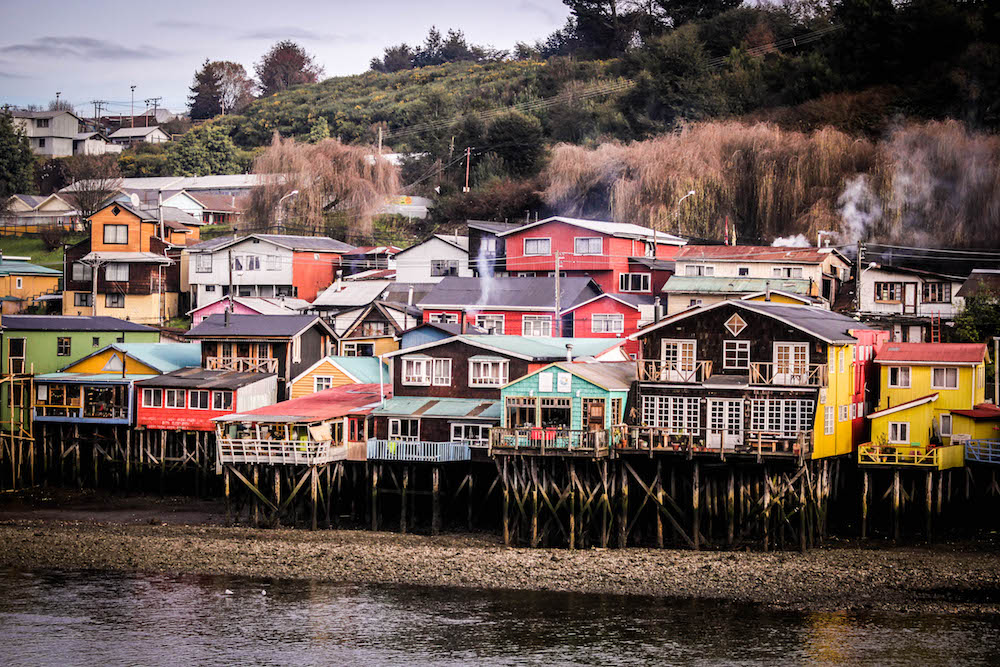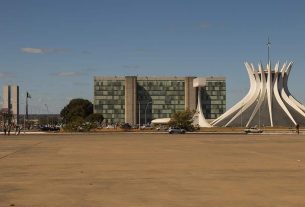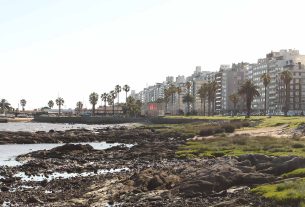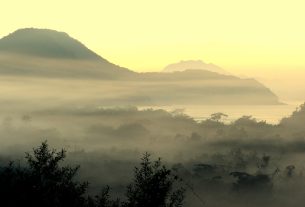To choose where to stay in Chiloé can be a puzzle if you are not familiar with the map and regional organization.
The Chiloé archipelago is made up of around 30 islands in the Province of los Lagos, north of Chilean Patagonia and close to the mainland city of Puerto Montt. The main island is Grande de Chiloé, where the two largest cities, Castro and Ancud, are located.
In them, you will find the best urban structure and a greater supply of hotels and agencies that offer tourist tours, therefore It’s interesting to use them as a base to explore the rest of the island.especially if you don’t have a car and depend on public transport.
Speaking of which, the cities and main tourist attractions in Chiloé are connected by bus lines that leave regularly and there are good roads for those who plan to drive. However, this does not mean that traveling between the islands is quick or practical, as the distances on Ilha Grande are not exactly small.
Between Castro and Ancud, for example, you have to travel an hour by road. To take trips to other islands, you need to cross by ferry.
Think about this when booking your accommodation in Chiloé and organizing your travel itinerary.
Chiloé accommodation guide: where to stay in the best cities (with map)
If you are traveling without a car, I suggest you concentrate your search for hotels in Chiloé in the city of Castro. If you have more time, you can think about sharing your accommodation and spending a few days in Ancud as well.
If you have a motorbike, you can explore the island a little more. Some options for staying are:
- Dalcahue
- Achao
- Other smaller villages and farms, located in rural areas, but giving an authentic insight into the local way of life
See now some hotel suggestions and the advantages of staying in each of these places.
1. Castro
Mocupulli airport, 20 km from Castro, is the disembarkation point for passengers arriving in the archipelago by air.
Buses leaving Santiago and Puerto Montt heading to Chiloé also have the Castro bus station as their final stop.
Due to its central location, good infrastructure, being the largest city in the region and having the largest range of hotels in Chiloé, Castro is the most obvious choice as a base for exploring the islands.
It is also home to the neighborhoods of colorful stilt houses that have become one of Chiloé’s great postcards.
Some of these houses today operate as hostels, inns and restaurants. Castro is also a good base for exploring the natural trails of Chiloé National Park and Tantauco Park, as well as the Historic Churches route, another strong mark of typical local architecture.
Find hotels in Castro
Hotels in Castro, Chiloe
- Hostal Palafito Waiwen: Economical option for those who want the experience of staying in one of the archipelago’s iconic stilt houses. Daily rates from US$44. SEE PRICES.
- Hotel Palafito Entre Mar e Tierra: Beautiful deluxe alternative to stilt houses. Feeling like you are staying in an authentic Chilota house, with themed decor. Daily rates from US$95. SEE PRICES.
- Sigizia: Another modern and comfortable option for those who don’t want to give up authentic accommodation. Daily rates from US$128. SEE PRICES.
- Don Zoilo: Chalets and apartments with swimming pool, facing the sea and close to the center of Castro. Daily rates from US$40. SEE PRICES.
- La Minga Hostel: For backpackers, one of the most economical options in the city. Daily rates from US$17 for shared rooms. SEE PRICES.
2. Ancud
Those coming by land first pass through Ancud when entering Ilha Grande de Chiloé. The disembarkation port for the ferry that travels between the continent and the island is a few kilometers away.
Ancud is the largest city in the north and also offers a wide range of accommodation and tourist infrastructure. It’s the best base for seeing the penguins in Puñihuil Bay and for the whale watching boat trip (both summer only).
The city is also closer to Caulín Bay, the natural habitat of dozens of species of birds, which earned the place the nickname “El Santuario de las Aves”.
At the end of January, there is a very famous festival in Caulín that celebrates the customs of the region. Another important attraction on the outskirts of Ancud is the Chepu valley, considered one of the most beautiful landscapes in Chiloé.
If you have more than four days in the archipelago, an interesting strategy is to divide your accommodation between Ancud, to explore the north of the island – especially if you travel in the summer, a time when it is possible to observe penguins –, and Castro, to the attractions of the center and south.
With less time, this option ends up becoming very hectic, making it preferable to concentrate your days in Castro and its surroundings.
Find hotels in Ancud
Hotels in Ancud, Chiloe
Other places to stay in Chiloé
In addition to the options above, if you have a car you can divide your accommodation between the villages below or even choose one of them to have a different and immersive experience in Chiloé.
3. Dalcahue
Dalcahue is another city with good tourist and urban infrastructure. It has a famous crafts market and several cooks which serve the best of Chiloé food, including the traditional Curanto.
As it is only 20 km from Castro and can be visited on a day trip, it is not a very smart choice of accommodation for those who do not intend to drive, as the Castro bus station has many more transport options.
Anyone renting a car will see little difference in terms of geographical location and can choose to stay in Dalcahue if they are looking for a more bucolic and remote place to spend time.
Find hotels in Dalcahue
Hotels in Dalcahue, Chiloe
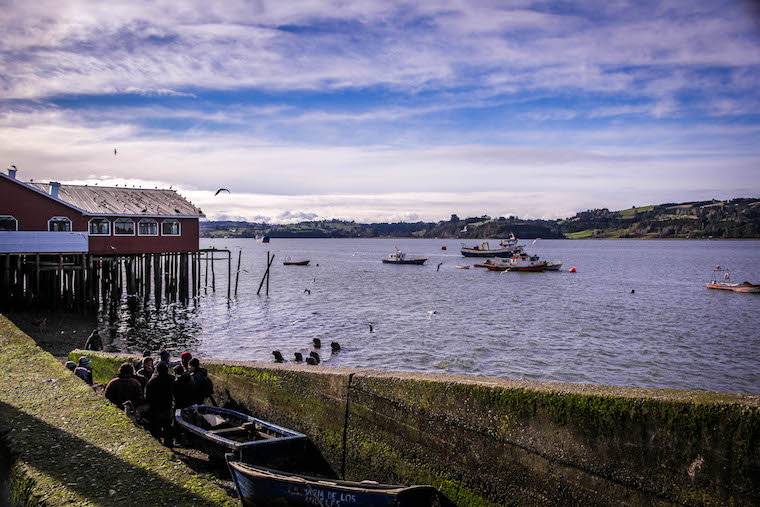
4.Achao
Achao is the only one of the four cities listed here that is not on the Big Island of Chiloé, but on the island of Quinchao. It can also be visited from Castro, using one of the regular buses that leave from the bus station.
This is a more isolated alternative in terms of transport, since to visit other parts of the archipelago you will need to take a ferry crossing and inevitably pass through Castro.
As it is surrounded by green hills, it is in front of a less crowded beach and its few accommodation options are cabin style and boutique hotels, it is an option for those looking for a peaceful refuge and relative isolation.
Find hotels in Achao
Hotels in Achao, Chiloe
Exclusive cabins and accommodation in Chiloé
Following the same line of accommodation in bucolic locations, with lots of green fields and sheep farms around, Chiloé has other villages that are even smaller and more isolated. Many of them offer family and rural accommodation, which gives visitors an authentic experience of the common day-to-day lives of the island’s peasants.
- Cabañas Los Fabianes: Beautiful wooden cabin in the countryside of Isla Grande, with jacuzzi. Daily rates from US$88. SEE PRICES.
- Domos Chiloé: Beautiful dome-shaped house, with a glass roof so you can enjoy the stars. Daily rates from US$104. SEE PRICES.
See all hotels in Chiloé on Booking.
Best hotels in Chiloe
These are the best hotels to stay in Chiloé, according to the curatorship of 360meridianos.
How much does accommodation in Chiloé cost on average?
This is the average price for accommodation in Chiloé, Chile:
- Hostel/Budget: between 15 to 30 dollars
- Intermediaries: starting from about 40 to 100 dollars.
- Private cabins: They generally start at around 50 to 150 dollars per night.
- Lux: They generally start at around $150 and can go up to over $500 per night.
During the high summer season, from December to March, it is common for accommodation prices in Chiloé to be higher, due to the large number of tourists visiting the region. Therefore, it is important to book in advance.
During the low season, between April and November, prices tend to be more affordable.
How long to stay in Chiloé?
If you want to visit the main cities and tourist attractions such as Castro, Ancud and Chiloé National Park, as well as the wooden churches, between 4 days is enough.
However, if you want to explore the island more leisurely, visiting the beaches and small towns along the coast, you may need more time.
It is also important to take into consideration the time of year you are visiting Chiloé. During the high summer season, from December to March, the region can be busier and tourist activities can be in greater demand.
On the other hand, during the low season, between April and November, the region may have colder temperatures, but offers the possibility of exploring the island more peacefully.
Therefore, if you want to get to know the island at leisure and enjoy everything it has to offer, a stay of 5 to 7 days could be a good option.
This will allow you enough time to go hiking, boat trips, explore the small towns and enjoy the local landscapes and culture. To find out more, read our post about what to do in Chiloé, Chile’s magical archipelago.
When is the best time to travel to Chiloé?
See below some information about each season of the year to help you decide when is the best time to visit Chiloé:
- Summer (December to February): It’s high season in Chiloé, with warmer, sunnier weather, making it the ideal time to explore the beaches and enjoy outdoor activities. However, during this period the area can be very busy and accommodation prices can be higher.
- Autumn (March to May): The weather starts to get cold, but it is still possible to enjoy sunny days with mild temperatures. Furthermore, it is the time for fruit harvesting and festivals, such as the Chilota Tradition Festival in Castro, which takes place in April.
- Winter (June to August): Chiloé can get quite cold and rainy during the winter. It rains a lot, believe me! This can make hiking and walking in nature impossible. However, during winter it is possible to see many migratory birds that visit the region.
- Spring (September to November): The weather starts to warm up again during spring, with landscapes green and blooming. Furthermore, in November, the Festa da Navegantes takes place in Castro, which celebrates the region’s maritime tradition.
If you want to enjoy beaches, outdoor activities, and busy tourist attractions, summer might be the best time. If you prefer milder temperatures, enjoying nature and exploring local culture more calmly, autumn and spring may be good options.
Travel insurance for Chile with discount coupon!
Don’t forget to take out travel insurance for your stay in Chile. Although the country does not require you to take out immigration insurance, traveling without one can give you a huge headache!
Insurance protects you against accidents and illnesses and avoids spending unplanned money. In addition, it also covers any unforeseen events during the trip, such as flight cancellations and lost luggage.
You can get travel insurance for Chile at a discount of up to 25% for our readers. Just use the coupon 360MERIDIANOS05.
Click here to get your quote!


